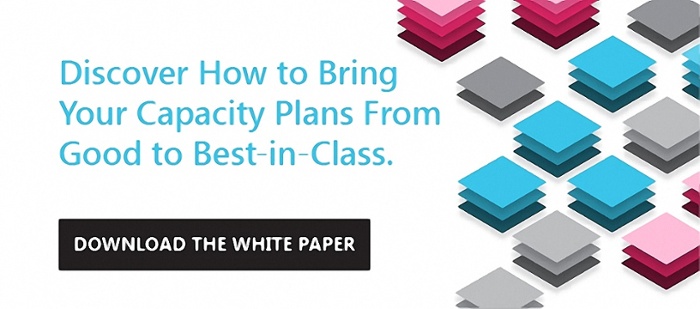For the first time, Unilever topped the ranking, followed by McDonald's, Amazon, Intel and a newcomer to the top five, H&M. Five new companies made the Supply Chain Top 25 this year as Schneider Electric, BASF and BMW joined the list for the first time while HP and GlaxoSmithKline rejoined after several years.
Among the three supply chain best practices noted by Gartner was the call for companies to “invest in advanced analytics capabilities to make step-function improvements in performance within and across supply chain functions.” There are two key takeaways within this statement:
- The most successful companies will begin investing heavily in predictive and prescriptive analytics.
- In order to successfully implement advanced analytics, such capabilities need to span all functions of the supply chain and the business as a whole.
While there has been a lot of airtime analyzing the results of Gartner’s report, we are more interested in diving deeper into this idea of adopting advanced analytics. Here are River Logic, we, too, believe that analytics applications built on top of flexible platforms for business-wide execution is the future of supply chain success.
The Historic Challenges in Supply Chain
Let’s first dive into why platforms for advanced analytics are becoming increasingly popular by exploring three challenges in the evolution of supply chain applications:
Challenge 1: Supply chain is a competitive differentiator for companies, but packaged applications have largely commoditized the business processes.
Enterprise Resource Planning (ERP) and Supply Chain Planning Systems of Record (SOR) tend to commoditize the processes at companies and convert them into cookie-cutter templates that fail to represent an end-to-end business as it is. It’s no wonder Excel continues to be the best way for companies to build differentiated islands of innovations across their organization — even more simple businesses can’t fit a mold.
Challenge 2: Supply chain requires a lot of data, and it’s no surprise that companies tend to get overwhelmed with the data requirements of packaged applications.
ERPs and Supply chain SORs require a lot of standard data that becomes hard to secure and maintain at organizations, thus resulting in implementations that fall significantly short of the planned / anticipated ROI.
Challenge 3: Supply chain processes need to be highly responsive, yet most supply chain ERPs and Supply Chain Planning SORs tend to be performance challenged.
Supply chain application software was not designed from the ground up to be high performing due to its evolution in the 1990s. There are a few tools that are designed to be responsive, but they focus on heuristics rather than full optimization capabilities. Furthermore, there are some new tools that are built to be in-memory but have the shortcoming of being heuristic-driven rather than focusing on constraint-based optimization.
Advanced Analytics Applications Address a Market Need
Speaking to these challenges, Gartner has identified a new requirement in the marketplace for companies that eliminate the above challenges: highly flexible supply chain analytics applications.
The key enabler of supply chain analytics applications is an analytics platform with the following characteristics:
- It allows companies to innovate on their specific processes without the need to adopt commodity cookie-cutter applications
- Given the applications can be configured based on company-specific requirements, these applications can be set up to adapt to the existing data available instead of being bogged down by data gaps
- Given the applications are configured on a company-by-company basis, applications can be tuned for performance
So, coming back to Unilever
Unilever has set up a Center of Excellence for supply chain within which analytics is a key area of focus. This is a large reason why they were ranked at the top of Gartner’s Supply Chain Top 25. Unilever has recognized the need for a platform-for-analytics approach that helps in solving critical business problems faced by their organization.
They have recognized that these business problems cannot be solved by standard packaged applications after having tested several supply chain planning product alternatives. They chose a platform that allows them to model disparate business problems, provide fully visibility to their lead decision makers and run what-if scenario analysis to create optimal, feasible plans that maximize business outcomes.
The Added Value from an Analytics Platform
The typical value from deploying an analytics platform on an end-to-end basis includes both business outcomes as well as qualitative metrics that drive efficiency and effectiveness in the organization. Following are four key way businesses add value to through an analytics platform:
- Achieve higher business value
- Improve service levels, driving higher revenue
- Identify plans that lead to 2-5% of revenue in higher profit
- Understand product, customer and order profitability
- Increase ROIC from better use of assets and inventory
- Create innovation through experimentation/trial & error
- Business analysts quickly configure models without any coding
- Explicitly tie value to business outcomes
- Drive faster adoption by the business
- Quick configuration for business users through first class user interfaces
- Full planning capability with first class user experience reduces inefficiencies and streamlines planning processes
- Manage analytics platform efficiently and effectively
- Develop deeper expertise with one team managing multiple applications – driving higher business adoption and improved application performance
- Reduce cost and risk of knowledge loss
So...is your organization ahead of the curve or behind?







